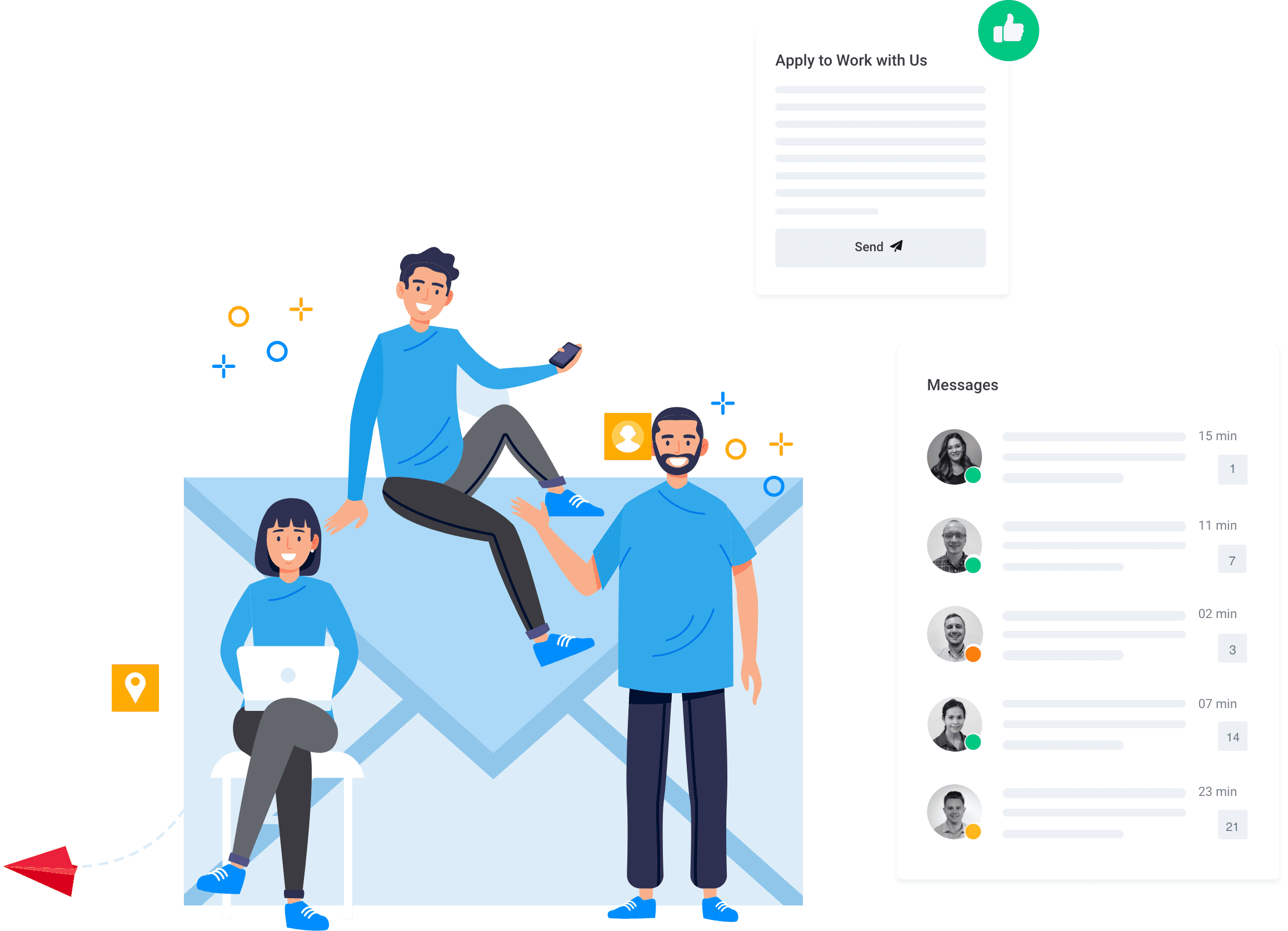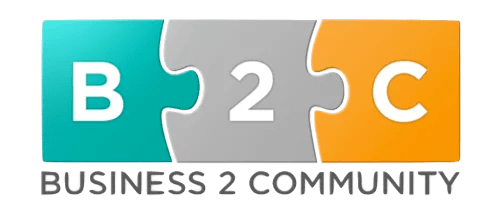Maybe your business-to-business (B2B) company has perfected your lead generation strategy. You reach the right prospects at the right time, and your conversion rates are high. Your sales team is full of superstars who are experts at making a deal.
Why aren’t you growing?
Because there’s a gap in your strategy: You’re not focusing on how to retain and nurture customers after they sign on the dotted line.
Satisfied customers are a goldmine of opportunity. They’re more likely to be repeat customers, send new business your way, and help you create a customer experience that draws in more leads than ever before.
In the cutthroat world of B2B marketing, making customers the focus of your business is what gives you an edge over the competition.
What Is Customer-Driven Marketing?
Customer-driven marketing is a marketing approach that focuses on building strong, positive relationships with existing customers. By identifying your target market, meeting the needs of your customers, and ensuring they are satisfied with their experience at every touch point, your company will become a magnet for new prospects and returning customers.
Your buyers have problems they want solved, pain points they want addressed, and needs they want met. A customer-driven marketing approach involves creating solutions to those problems, pain points, and needs at every stage of their buying journey.
With a strong customer-driven marketing strategy in place, your B2B organization will optimize your marketing return on investment (ROI) and start reaping the benefits of a loyal, engaged customer base.
The Benefits of Customer-Driven Marketing: Why B2B Companies Need to Focus on the Customer
Brand loyalty is everything.
When a customer has a positive experience with a brand—feels they are listened to, has their pain points addressed or problems solved, is rewarded for referrals and feedback, and gets a personal touch—they are more likely to stay loyal to that company.
Grow Your Customer Base
Happy customers—those who get exactly what they’re looking for from your company and have a positive experience—will share their feedback with others. These word-of-mouth referrals will help your customer base grow.
Build Customer Loyalty
Creating a valuable, dynamic, enjoyable experience for customers not only builds brand loyalty but also increases revenue. Why? Because loyal customers will make more frequent purchases from their favorite companies.
Increase Customer Lifetime Value
A customer-driven marketing strategy requires identifying the pain points of your target audience and responding with a personalized solution. When customers feel valued and listened to, they are more likely to stick with your business long-term, leading to an increased customer lifetime value.
Steps in Designing a Customer-Driven Marketing Strategy
When it comes to designing a customer-driven marketing strategy, you can’t just go with the flow or throw things at the wall and see what sticks—at least, not if you want your efforts to be successful.
You’ll need to spend time and resources researching your audience, addressing customer needs, engaging with buyers across channels, and creating a positive customer service experience at every touch point.
Follow these steps to get started.
Align Your Customer-Facing Departments
No team can do this work alone. All your customer-facing departments—marketing, sales, and customer success—need to prioritize creating an excellent customer experience for each and every buyer.
Aligning these teams may require removing departmental silos, sharing data from customer relationship management (CMS) programs, and communicating clearly throughout the buyer’s journey.
Identify & Segment Your Target Audience
A customer-driven marketing approach requires knowing the needs, pain points, and concerns of your target customers so you can create solutions that blow their expectations out of the water.
But the first step is knowing who your audience is.
Talk to your customers, conduct market research, and build audience personas to better personalize your marketing efforts. Then, using the data gathered from your research and planning, segment your audience and start tailoring your communications and content for each group.
Focus on Customer Needs, Challenges, & Pain Points
Based on your audience research and personas, define their needs, challenges, and pain points:
- What problems does your customer want to solve?
- How can your products or services address their pain points?
- What makes your company a better solution to their concerns than your competitors?
Focus on the challenges you can address, and show your target customers how your products or services are the best solution to their unique pain points.
Take an Omnichannel Approach to Customer Engagement
Today’s B2B customers use different devices and channels to research solutions, engage with companies, and make a purchase. From cellphones, tablets, and laptops to social media, email, and landing pages, a successful customer-driven marketing strategy requires meeting your customers where they are.
Connecting with customers on their preferred channels and making it easy for customers to interact with your brand increases both customer satisfaction and customer lifetime value.
Whatever channel your customers use to connect with your brand, your goal should be to create a smooth, frictionless experience—whether they are interacting with you on LinkedIn or responding to a chatbot on your product page.
Improve the Customer Service Experience
Customer service is the foundation of customer-driven marketing. Customers remember and stay loyal to brands that offer a positive, high-quality customer service experience. Flip the coin, and you’ll see that brands with an unorganized approach to customer service lose business—no matter how good their products or services are.
Focus on improving the customer service experience from the very start:
- Use live chat software on your website to provide real-time support
- Answer common customer queries with chatbots to offer 24/7 service
- Stay active on the channels where your customers spend their time
- Personalize customer interactions whenever possible
- Train your customer success team to deliver an exceptional customer service experience
Offering a consistent, positive customer experience will lead to a larger, more loyal, more engaged customer base.
Use Word-of-Mouth Marketing to Get More Customers
Nothing beats word-of-mouth marketing—so loyal customers who are willing to share their positive experiences with your brand are worth their weight in gold.
Here’s how to encourage word-of-mouth marketing and grow your customer base:
- Create a referral program so that customers get rewarded for sending new buyers to your company
- Ask customers to leave reviews and star ratings after making a purchase
- Build an affiliate program where partners get a percentage of sales made through their personalized link
- Run customer contests to encourage referrals during a specific timeframe
When it comes to customer loyalty, like attracts like. Use these tactics to turn loyal customers into more loyal customers.
Gather & Use the Insights from Customer Feedback
Your customers have things to say. Your job is to listen.
And, of course, use what you learn to improve the customer experience, create better products, and ensure your solutions are aligned with the needs of your target audience.
Customer feedback not only provides you with invaluable data and insights into what’s working and what isn’t; it also makes customers feel heard. When they see your brand listening and responding to their feedback, they know they are valued, they will view your company as trustworthy, and you will build credibility . That means you’re one step closer to a long-term, loyal customer.
Customer-Driven Marketing vs. Customer-Centric Marketing: What’s the Difference?
If you do any research into customer-driven marketing, you’ll see a lot of terms thrown around. Most of them are used interchangeably, but there are some key differences that are important to understand.
Let’s take a closer look:
- Customer-driven marketing: Cultivating a positive customer experience throughout and beyond the buyer’s journey, building a loyal customer base, and implementing feedback to create a strong, long-term relationships with customers
- Customer-centric marketing: Calculating the lifetime value of customers and focusing marketing efforts and resources on high-value customer segments
Consider your company’s unique situation. While most businesses can implement a customer-driven marketing strategy right away, it takes more time, resources, and strategic planning to follow a customer-centric approach. And, of course, some B2B organizations even combine the two strategies.
Partner with the Customer-Driven Marketing Experts at OneIMS
Developing a customer-driven marketing strategy is key to long-term growth. If you want to create a strong brand identity, cultivate a loyal customer base, and stay in the loop of changing customer needs, your marketing, sales, and customer success departments need to put the customer at the center.
Need help retaining and nurturing customers? That’s where we come in.
At OneIMS, our customer-driven marketing experts help B2B companies like yours align customer-facing departments under the same goals: to acquire new buyers, to retain existing customers, and to focus on sustainable growth. We have a long history of helping companies in a variety of industries innovate their marketing strategy, engage with their target audience, develop deep brand loyalty, and meet the ever-changing needs of their customers.
We pride ourselves on using innovative and data-driven marketing solutions that produce measurable, sustainable results—but you don’t have to take our word for it. View testimonials from our clients and read our blog to get an idea of our training, experience, and track record of success.
Are you ready to focus on the needs of your customers and grow your business? Schedule a consultation with us today to get started.



































